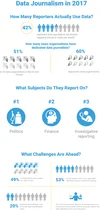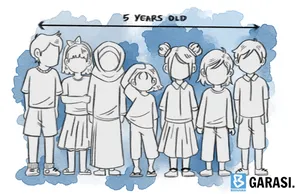The state of data journalism in 2017
Data journalism has been a big focus for us at the Google News Lab over the past three years—in building tools, creating content and sharing data with the data journalism community. We wanted to see if we’re taking the right approach: how big is data journalism, what challenges do data journalists face and how is it going to change?
Up until today, we really haven’t had clear answers to those questions. So, in collaboration with PolicyViz, we conducted a series of in-depth qualitative interviews and an online survey to better understand how journalists use data to tell stories. We conducted 56 detailed in-person interviews with journalists in the U.S., UK, Germany and France and an online survey of more than 900 journalists. Our analysis offers a glimpse into the state of data journalism in 2017 and highlights key challenges for the field moving forward.
The result is one of the first comprehensive studies of the field and its activity. A decade ago, data journalists there was only handful of data journalists.
Today, this research shows that:
- 42% of reporters use data to tell stories regularly (twice or more per week).
- 51% of all news organizations in the U.S. and Europe now have a dedicated data journalist—and this rises to 60% for digital-only platforms.
- 33% of journalists use data for political stories, followed by 28% for finance and 25% for investigative stories.
There is a big international variation, even within our study. In France, 56% of newsrooms have a data journalist, followed by Germany with 52%, the UK with 52%, and the U.S. with 46%. Despite its huge growth, data journalism still faces challenges as we head towards 2018.
53% of the sample saw data journalism as a speciality skill that requires extensive training, and is not easy to pick up.
Survey respondents also discussed the time pressures they face and the limited bandwidth from dedicated data journalists who can clean, process, and analyze data. We found that 49% of data stories are created in a day or less.
Our research also found that data visualization tools are not keeping up with the pace of innovation. As a result, reporters are building their own solutions: a fifth of data journalists use in-house tools and software, whether it’s data visualization tools or even data cleaning solutions.

More than half of respondents want their organizations to use more data to tell stories. But, some felt the return on investment was unclear as the production of data journalism can take significant time and resources.
The future of data journalism, though, has never been as important as it is today, nor as much a part of the way journalists work every day, as this study shows. As one of our interviewees put it:
We heard from one data journalist in the U.S. that “data is a good way of getting to the truth of things ... in this post-truth era, this work is increasingly important. We are all desperately searching for facts.”






